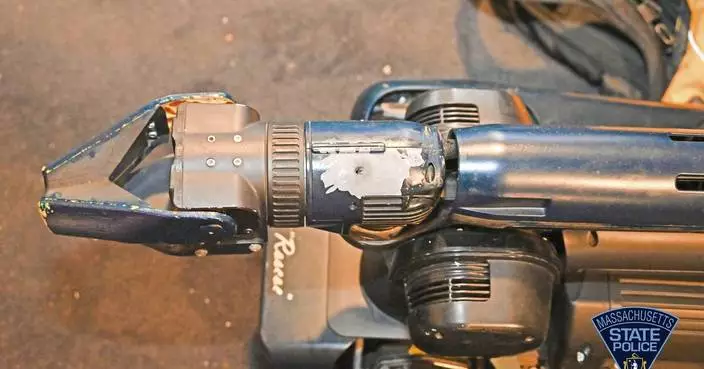A robotics company known for its widely shared videos of nimble, legged robots opening doors or walking through rough terrain is preparing to sell some after more than a quarter century of research.
Boston Dynamics CEO Marc Raibert said Friday that his company plans to begin selling the dog-like SpotMini robot next year, likely to businesses for use as a camera-equipped security guard.
But he thinks other applications for the four-legged contraption will be likely developed by other companies, because the robot has a flat platform to allow other equipment with its own computer programming to be easily mounted on top of it.
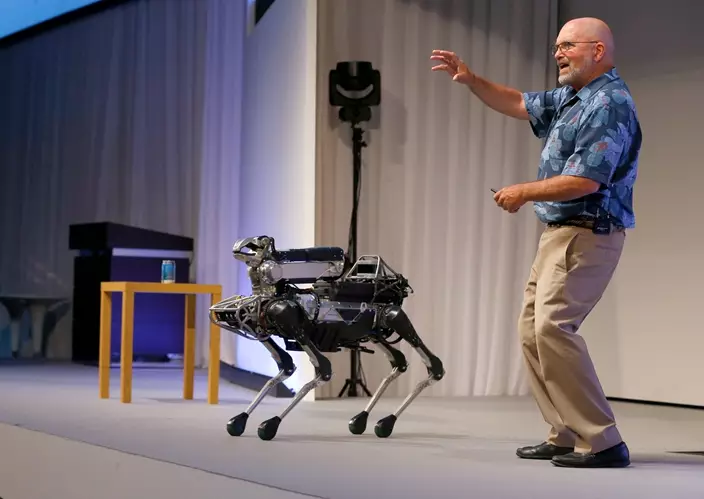
FILE - In this July 20, 2017 file photo, Boston Dynamics Chief Executive Marc Raibert speaks about his four-legged robot SpotMini during a SoftBank World presentation at a hotel in Tokyo. The robotics company known for its widely shared YouTube videos of nimble, legged robots opening doors or walking through rough terrain is finally preparing to sell some of them after years of research. Raibert said Friday, May 11, 2018, his company will begin selling the dog-like SpotMini robot next year, likely to businesses for use as a camera-equipped security guard. He made the announcement at a TechCrunch robotics conference at University of California, Berkeley. (AP Photo/Shizuo Kambayashi, File)
SpotMini gets around with the help of cameras on its front, sides and one mounted on its rear — a position that Raibert calls the "butt-cam."
Boston Dynamics already has made 10 SpotMinis with plans to manufacture about 100 more for additional testing this year before going into mass production by the middle of next year, Raibert said. No price has been set for the robot yet, though Raibert said making the latest prototype costs about one-tenth the price of earlier versions.
Raibert unveiled the SpotMini plans at the University of California, Berkeley, during a TechCrunch conference focused on the rise of robotics and its potential to perform a wide range of tasks and jobs now handled by humans.
Founded in 1992, Boston Dynamics rarely reveals its plans except by posting YouTube videos that have impressed and terrified people. Most of Boston Dynamics' robotics research had been applied in the military until Google bought the Waltham, Massachusetts, company in 2013. Japanese tech giant SoftBank bought Boston Dynamics from Google last year.
Although Boston Dynamics never released a commercial robot under Google, Raibert credited his company's former owner for helping it to start thinking of ways to bring its technology to a broader market.
Toward that end, he also showed the conference a video of Atlas, a two-legged robot that has learned how to sort and pick up packages, jump up and off blocks, jog and perform back flips. He said Boston Dynamics still hasn't figured out how to make money from Atlas yet.
"This machine is really trying to push the boundary of the future," Raibert said.
He also mentioned the possibility of building robots to help with construction projects, though he didn't provide any further details about that ambition on Friday.
ANCHORAGE, Alaska (AP) — A headless robot about the size of a labrador retriever will be camouflaged as a coyote or fox to ward off migratory birds and other wildlife at Alaska's second largest airport, a state agency said.
The Alaska Department of Transportation and Public Facilities has named the new robot Aurora and said it will be based at the Fairbanks airport to “enhance and augment safety and operations," the Anchorage Daily News reported.
The transportation department released a video of the robot climbing rocks, going up stairs and doing something akin to dancing while flashing green lights.
Those dancing skills will be put to use this fall during the migratory bird season when Aurora imitates predator-like movements to keep birds and other wildlife from settling near plane infields.
The plan is to have Aurora patrol an outdoor area near the runway every hour in an attempt to prevent harmful encounters between planes and wildlife, said Ryan Marlow, a program manager with the transportation department.
The robot can be disguised as a coyote or a fox by changing out replaceable panels, he said.
“The sole purpose of this is to act as a predator and allow for us to invoke that response in wildlife without having to use other means,” Marlow told legislators last week.
The panels would not be hyper-realistic, and Marlow said the agency decided against using animal fur to make sure Aurora remained waterproof.
The idea of using a robot came after officials rejected a plan to use flying drones spraying a repellent including grape juice.
Previous other deterrent efforts have included officials releasing pigs at a lake near the Anchorage airport in the 1990s, with the hope they would eat waterfowl eggs near plane landing areas.
The test period in Fairbanks will also see how effective of a deterrent Aurora would be with larger animals and to see how moose and bears would respond to the robot, Marlow told the Anchorage newspaper.
Fairbanks “is leading the country with wildlife mitigation through the use of Aurora. Several airports across the country have implemented robots for various tasks such as cleaning, security patrols, and customer service,” agency spokesperson Danielle Tessen said in an email to The Associated Press.
In Alaska, wildlife service teams currently are used to scare birds and other wildlife away from runways with loud sounds, sometimes made with paintball guns.
Last year, there were 92 animal strikes near airports across Alaska, including 10 in Fairbanks, according to an Federal Aviation Administration database.
Most strikes resulted in no damage to the aircraft, but Marlow said the encounters can be expensive and dangerous in the rare instance when a bird is sucked into an engine, potentially causing a crash.
An AWACS jet crashed in 1995 when it hit a flock of geese, killing 24 people at Elmendorf Air Force Base in Anchorage.
If the test proves successful, Marlow said the agency could send similar robots to smaller airports in Alaska, which could be more cost effective than hiring human deterrent teams.
Aurora, which can be controlled from a table, computer or on an automated schedule, will always have a human handler with it, he said. It can navigate through rain or snow.
The robot from Boston Dynamics cost about $70,000 and was paid for with a federal grant.
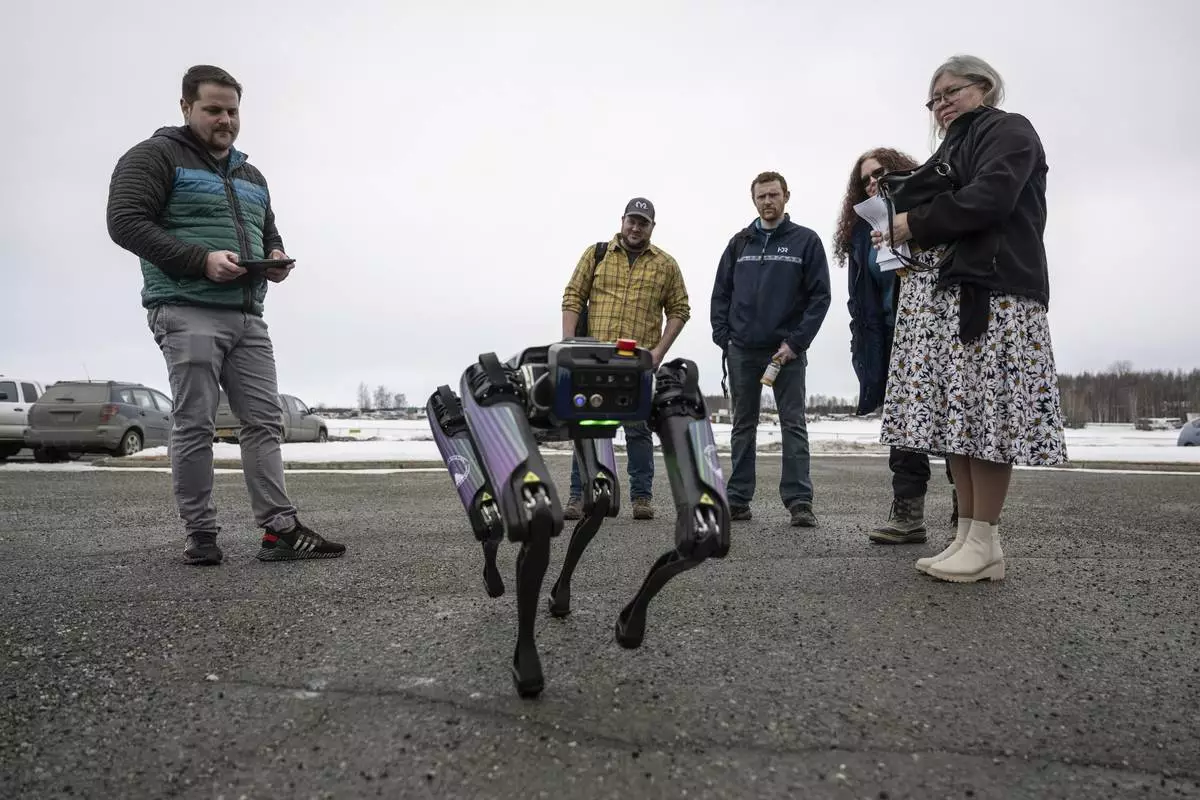
Alaska Department of Transportation program manager Ryan Marlow demonstrates the agency's robotic dog in Anchorage, Alaska, on March 26, 2024. The device will be camouflaged as a coyote or fox to ward off migratory birds and other wildlife at Alaska's second largest airport, the DOT said. (Marc Lester/Anchorage Daily News via AP)
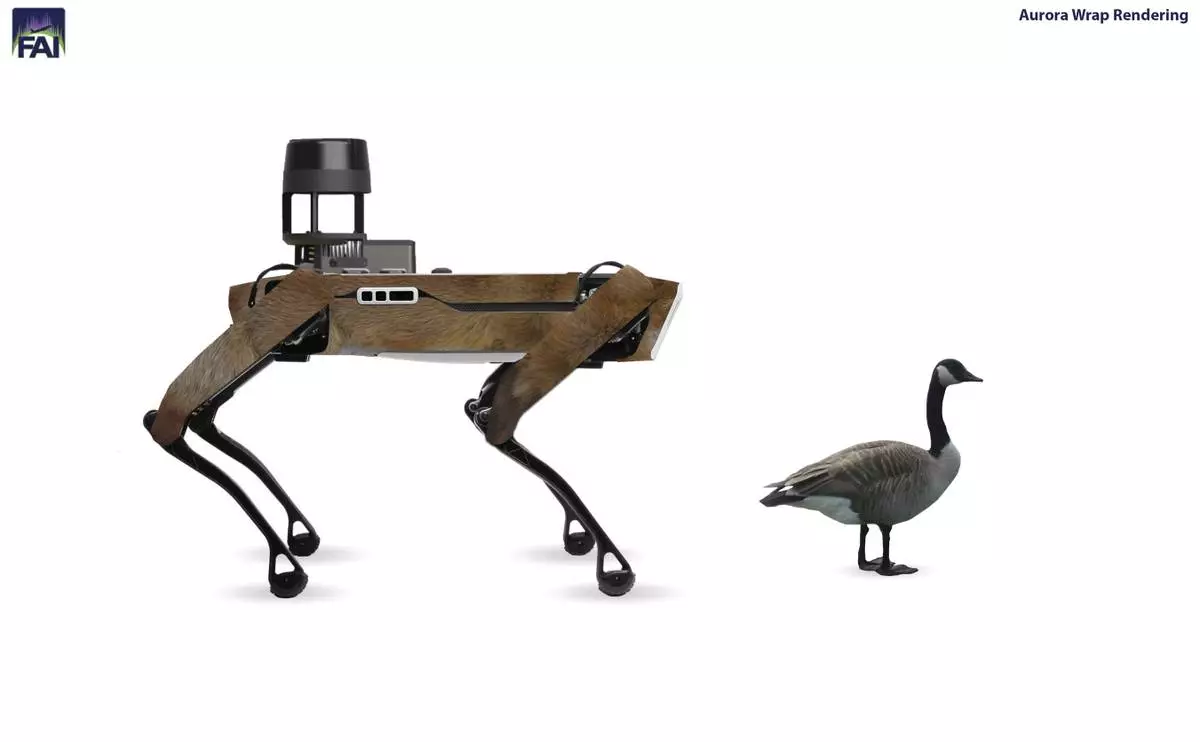
This illustration provided by the Alaska Department of Transportation in March 2024 depicts what the robot Aurora would look like with a graphic design disguising it as a fox. The device will wear wraps showing it as a fox or coyote as it is tested this fall to move waterfowl and other wildlife away from planes at Fairbanks International Airport. (Ryan Marlow/Alaska Department of Transportation and Public Facilities via AP)
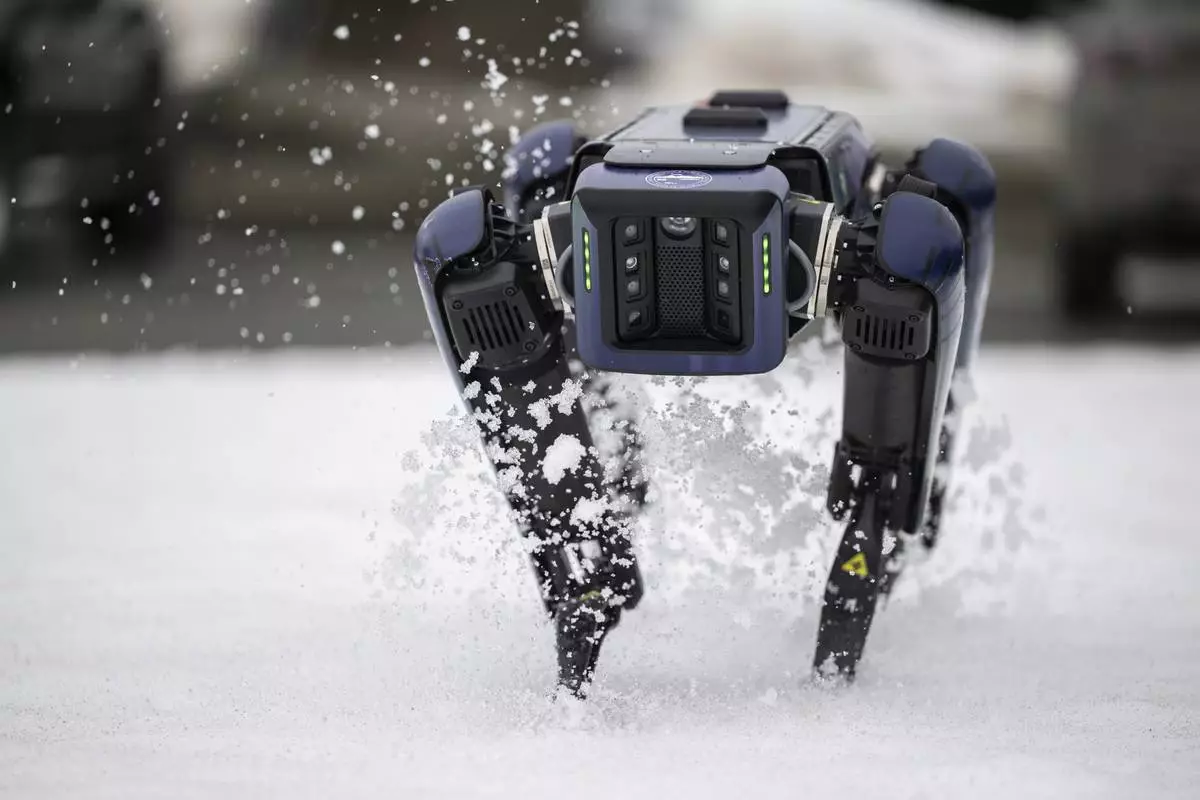
An Alaska Department of Transportation robotic dog walks through snow in Anchorage, Alaska, on March 26, 2024. The device will be camouflaged as a coyote or fox to ward off migratory birds and other wildlife at Alaska's second largest airport, the DOT said. (Marc Lester/Anchorage Daily News via AP)
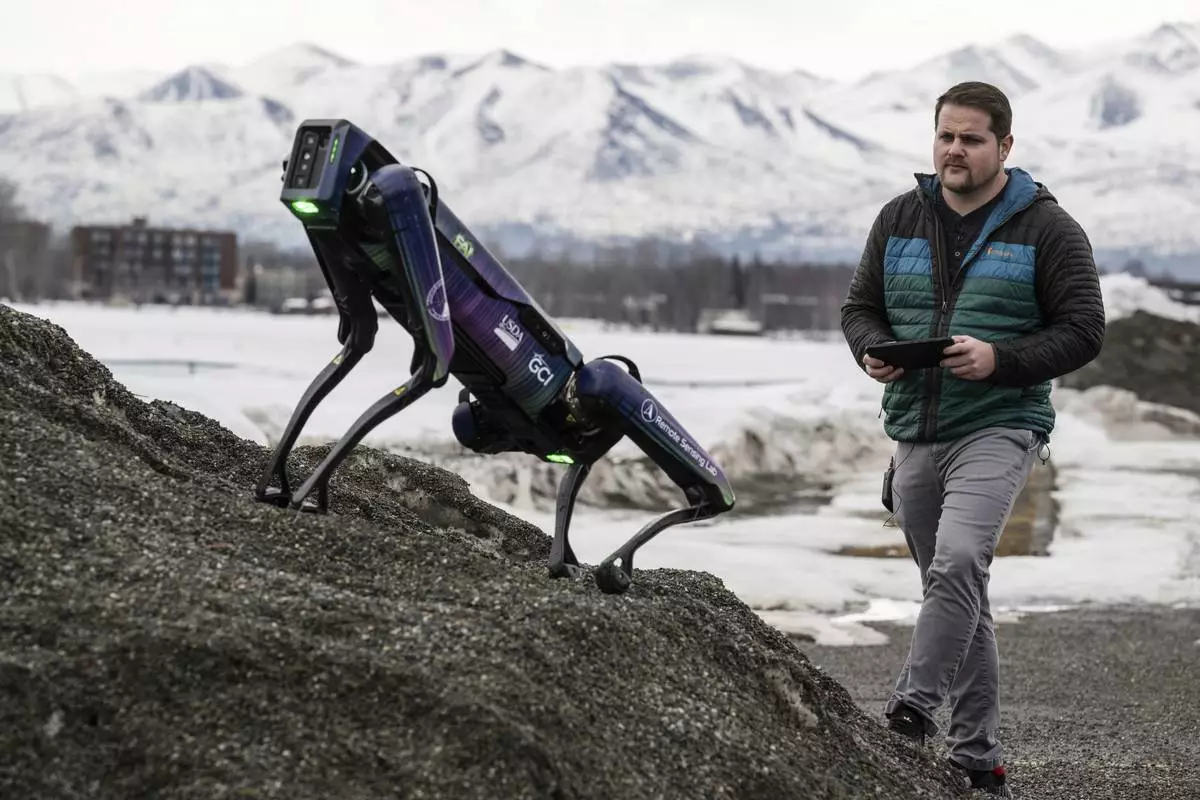
Alaska Department of Transportation program manager Ryan Marlow demonstrates the agency's robotic dog in Anchorage, Alaska, on March 26, 2024. The device will be camouflaged as a coyote or fox to ward off migratory birds and other wildlife at Alaska's second largest airport, the DOT said. (Marc Lester/Anchorage Daily News via AP)








